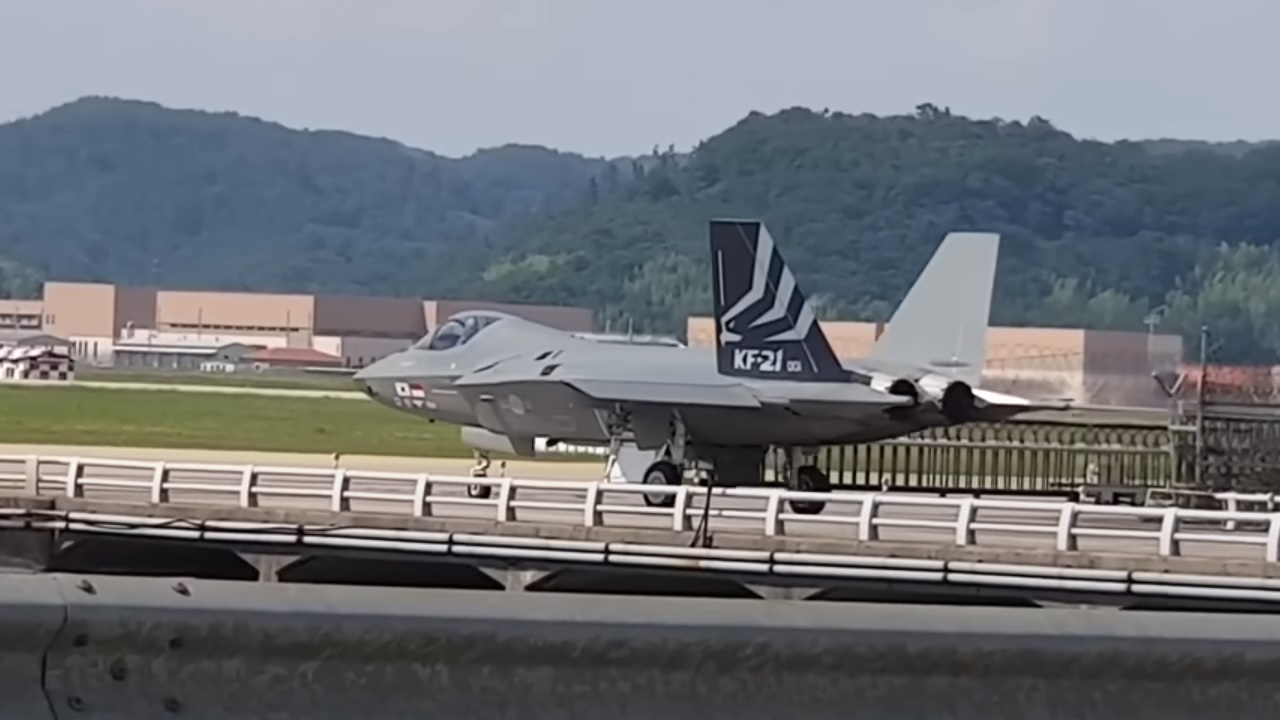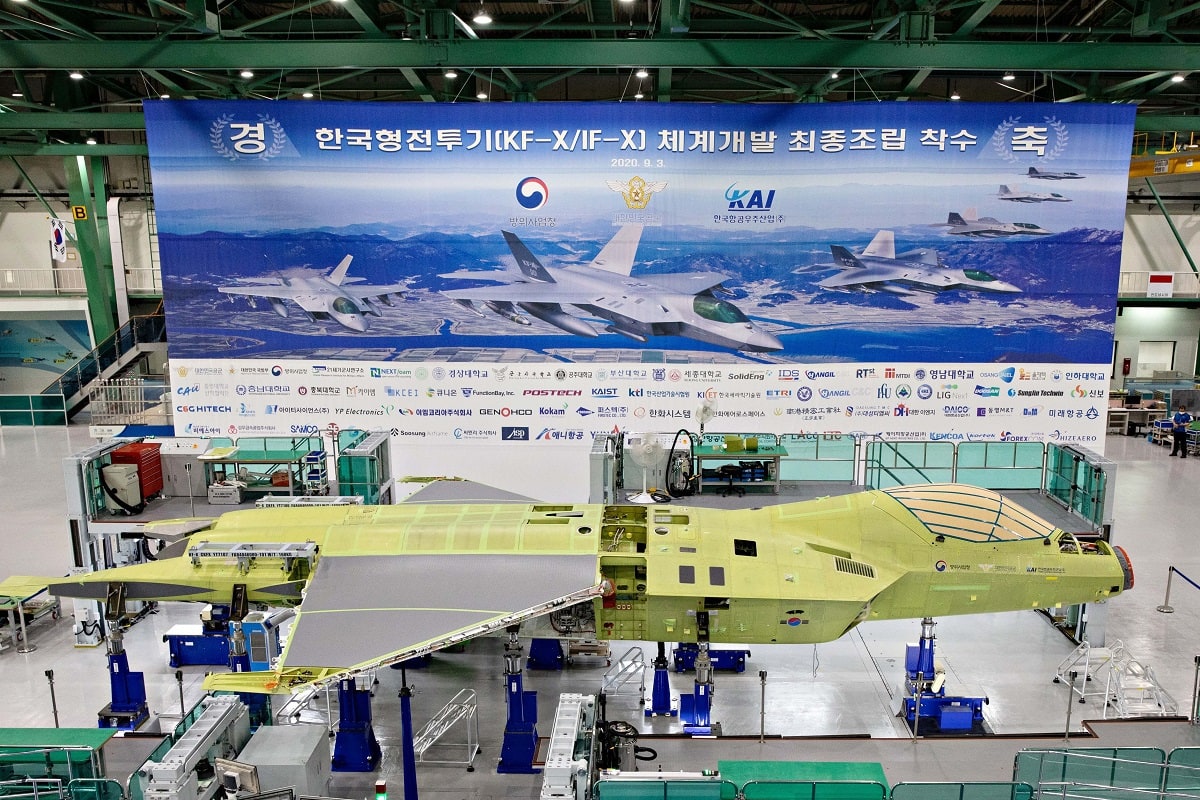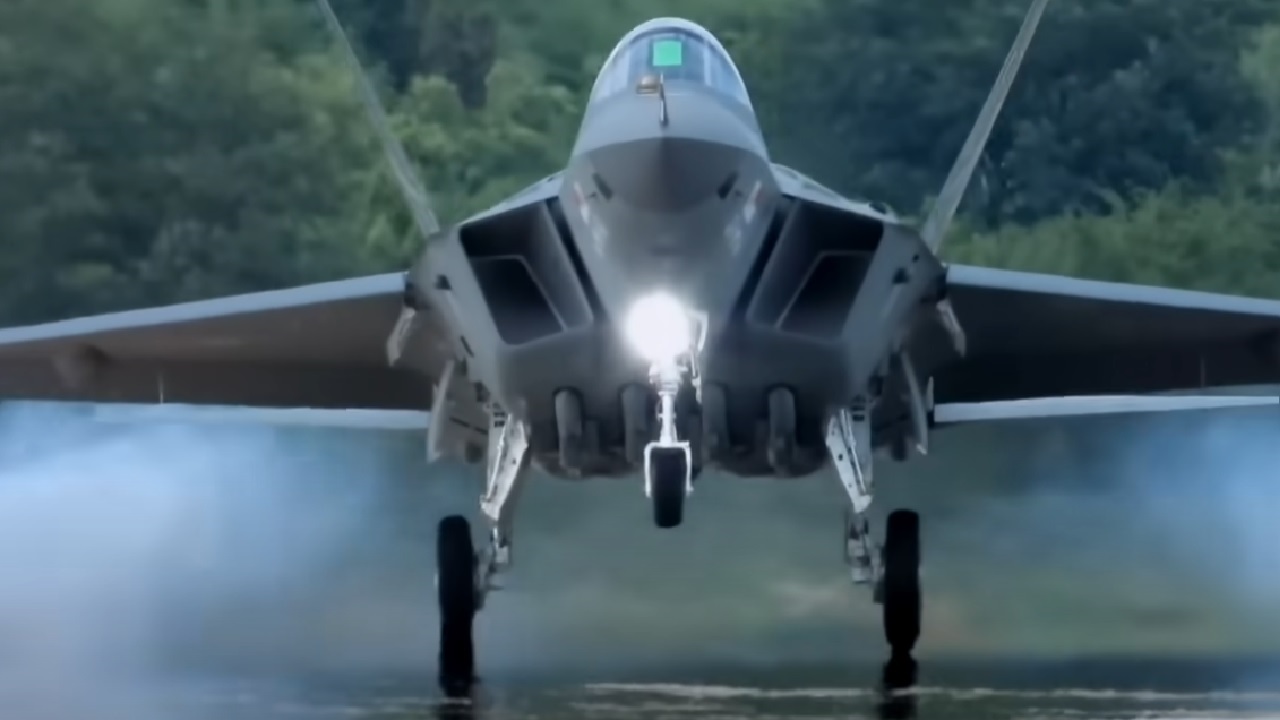Key Points: South Korea has ordered its first 20 KF-21 Boramae fighters from Korea Aerospace Industries for $1.41 billion, with delivery expected by 2026 or 2027.
-The 4.5-generation jet, equipped with advanced AESA radar, a 17,000-pound payload, and speeds of MACH 1.8, aims to replace aging F-4s and F-5s.

KF-21 fighter undergoing tests in South Korea. Image Credit: YouTube screenshot.
-Designed for air superiority and precision ground strikes, it enhances South Korea’s defense against North Korea and regional threats.
-While not fully stealthy, the KF-21 demonstrates domestic innovation with 60% of parts locally made, boosting economic development.
-The program could modernize South Korea’s air force, strengthening its security and regional deterrence capabilities.
South Korea’s KF-21 Boramae: A Game-Changer in Regional Air Defense
It’s been years of waiting for the South Korean Air Force. The Republic of Korea’s (ROK) military is finally ordering the first batch of KF-21 Boramae (Young Hawk) fighters.
The ROK has agreed to a deal with Korea Aerospace Industries for the manufacturing of 20 new warplanes worth $1.41 billion.
The KF-21 is a 4.5 generation airplane that aims to defend the South from North Korea or China vigorously.
But just how capable will it end up being? Could this be a cheaper – albeit less capable – F-35-like fighter plane over the long term?
KF-21 Is a Big Deal for South Korea
The ROK Air Force will receive the first KF-21s by late 2026 or early 2027. “Despite many challenges and difficulties, the KF-21 system development project was able to reach mass production stably, thanks to the solid cooperation of related organizations,” KAI President Kang Goo-young said in a news release.
Could There Be 120 Built by 2032?
Korea Aerospace Industries wants to produce 120 air superiority and multi-role KF-21s by 2032, even though the ROK military is buying them in limited batches at first. If everything remains on time and on budget, the air force may order another set of 20 next year.

KF-21 Fighter. Image Credit: Screenshot.
Older F-4 and F-5 Fighters Need to Be Replaced
The defense contractor is already testing the KF-21 Block II, allowing better capabilities for air-to-ground strike missions. The KF-21 is designed to replace the aging ROK F-4 and F-5 fighters.
The KF-21 “features enhanced survivability, combined/joint operations, sustainment, logistics support system, air superiority, and ground precision strike,” according to InterestingEngineering.com.
Powerful and Fast with a Large Weapons Payload
The 54-foot-long Boramae has an Active Electronically Scanned Array (AESA) radar for better situational awareness. The jet will also boast ten hardpoints for missiles and bombs with a payload of 17,000 pounds.
The twin GE F414 engines generate a maximum speed of 1,400 miles per hour (MACH 1.8), with an engine thrust of 44,000 pounds and a range of 1,500 nautical miles.
Looks Like an F-22 or F-35 Without the Fully-Stealth Attributes
The KF-21 can be compared to an advanced F-16 or F-15EX but it does not have the full stealth characteristics of an F-22 or F-35.
The KF-21 looks like the F-22 in appearance. The KF-21 can be re-fueled in-air which is an important capability should the ROK air force order an operation against China, say if there was a war with North Korea and the Chinese reacted by militarily supporting their ally in Pyongyang.

Image Credit: Media Handout.
Apple In the Eye of South Korean Defense Industrial Base
The Boramae, when it is fully deployed, will become the driving force behind the ROK air force.
The development time was extensive since 60 percent of the parts were made in South Korea.
This is one of the only 4.5 generation fighters to be made in an economy the size of the ROK. There is an element of economic development as the indigenous manufacturing of the fighter will create and sustain a significant number of jobs.
How Does the KF-21 Fit Into the Order of Battle?
The new KF-21s will come at the right time. South Korea’s F-4s and F-5s need to be retired. North Korea is completely belligerent as Kim Jong Un makes more aggressive rhetoric about war with the South. While North Korea has a poor air force comprised of ancient Soviet-era fighters, Kim would not be afraid to use them.
What the North really excels with its ballistic missiles, and it would be interesting to see if the KF-21 could provide an additional protective layer of air defenses with the capability of eliminating incoming ballistic missiles.
Also, the KF-21 ground strike efforts could destroy enemy command and control facilities and radar installations to blind the North Koreans on Day One of any conflict.
The Potential of Sending Retired Fighter Jets to Ukraine
The ROK military is not happy these days because Kim Jong Un has ordered thousands of his troops to fight in Ukraine. The South Korean government has said it may help the Ukrainian government’s war effort against Russia. Why not take some of the retired F-4s and F-5s and send the warplanes to Ukraine? This would make better sense than assigning them to salvage. South Korea will do something to counteract North Korea’s new mutual military assistance pact with Russia, which could mean exporting these fighters to Kyiv.

KF-21.
The KF-21 program, should it remain on time and within budget, will be a shot in the arm for the ROK Air Force. It has some stealth attributes but is not fully stealthy.
However, it is a considerable step up from F-4s and F-5s. The new fighter will be worth the wait and will likely give the North Koreans something to consider should they ever attack South Korea with their ancient fighters.
The “Young Hawk” is an exciting airplane that will help modernize the ROK air force to better protect the homeland and bring the fight to the enemy.
About the Author: Dr. Brent M. Eastwood
Brent M. Eastwood, PhD, is the author of Don’t Turn Your Back On the World: a Conservative Foreign Policy and Humans, Machines, and Data: Future Trends in Warfare plus two other books. Brent was the founder and CEO of a tech firm that predicted world events using artificial intelligence. He served as a legislative fellow for U.S. Senator Tim Scott and advised the senator on defense and foreign policy issues. He has taught at American University, George Washington University, and George Mason University. Brent is a former U.S. Army Infantry officer. He can be followed on X @BMEastwood.

